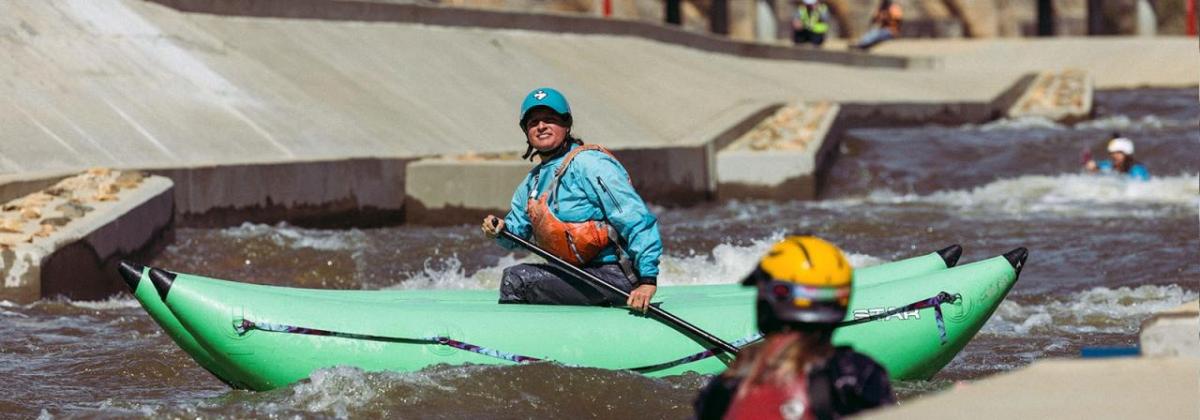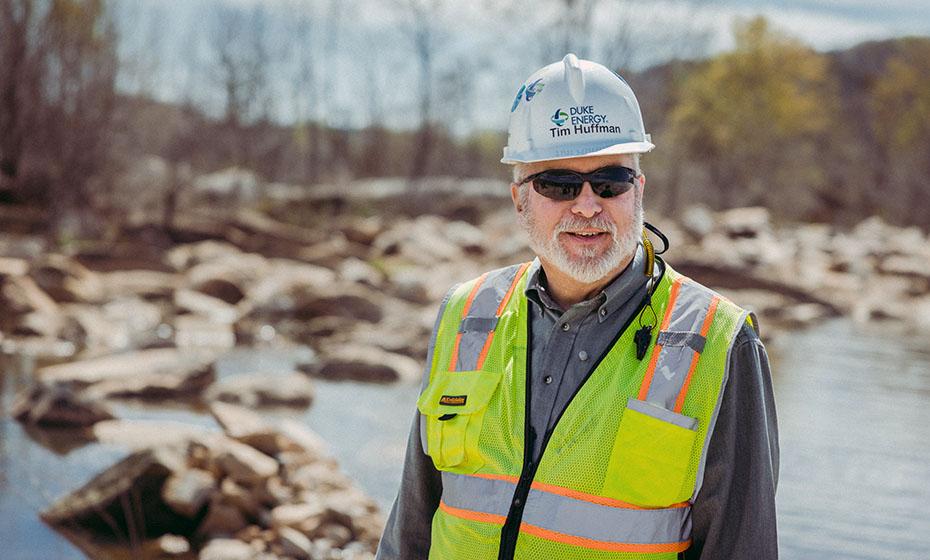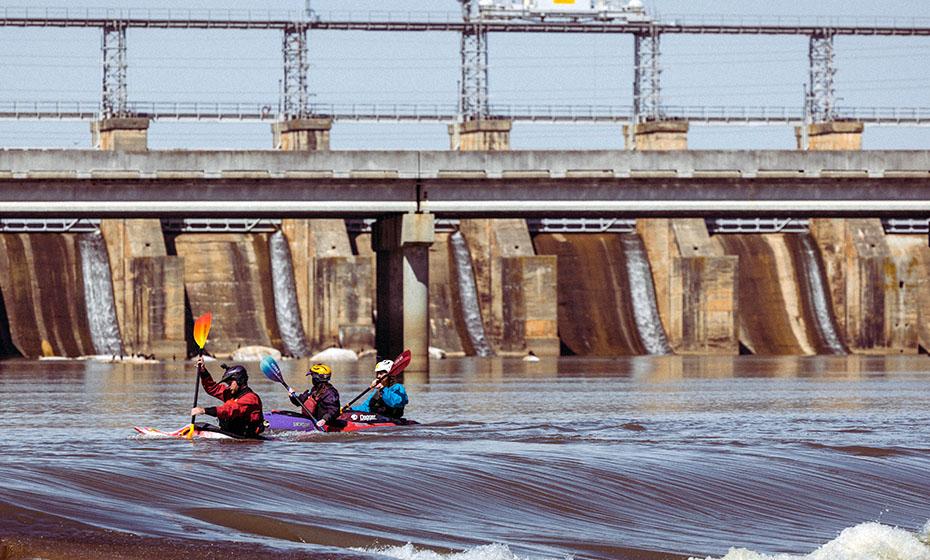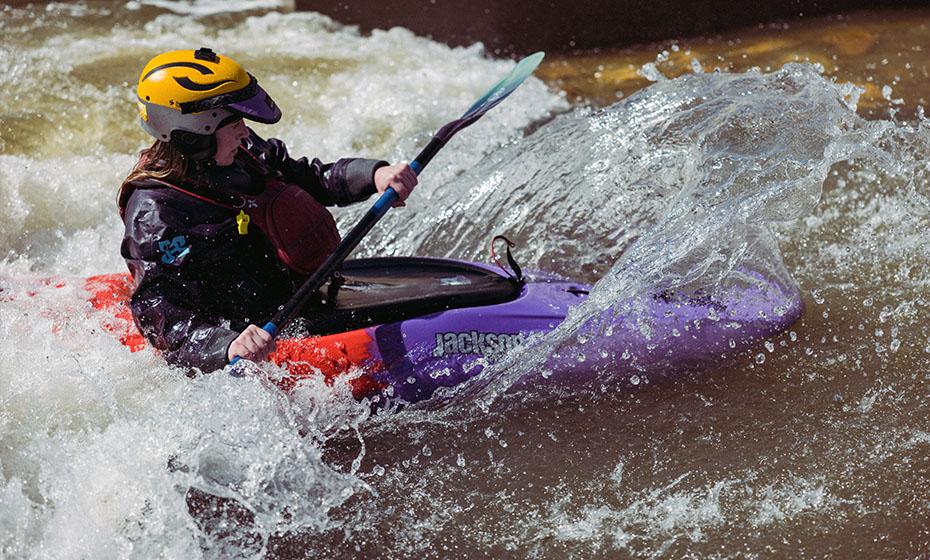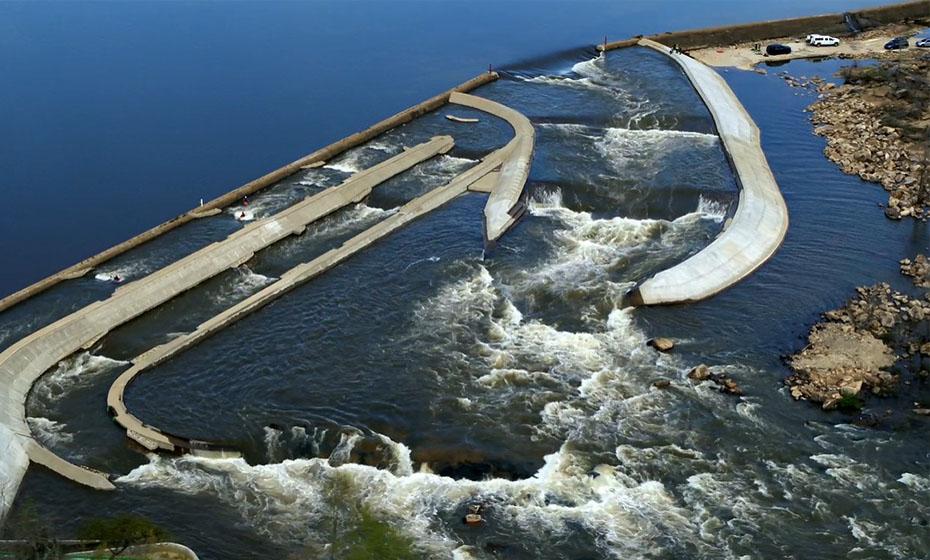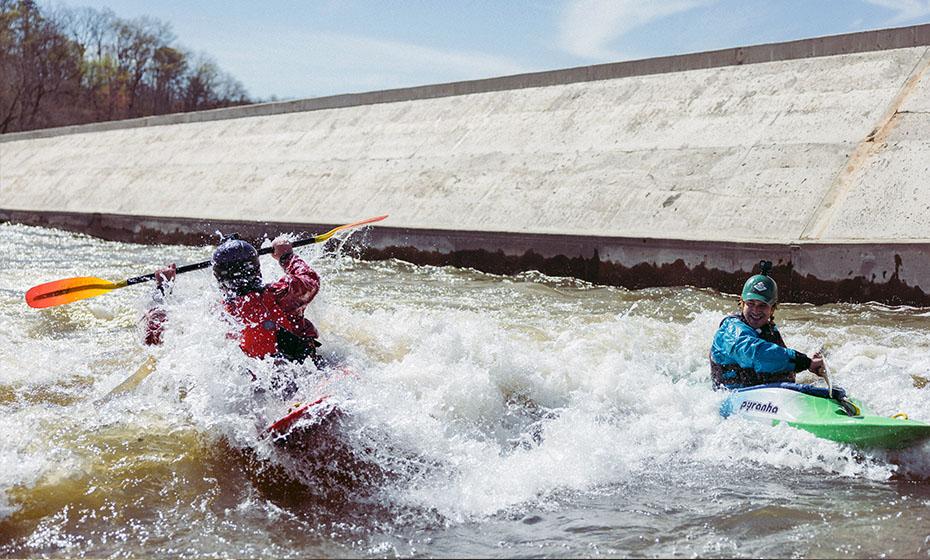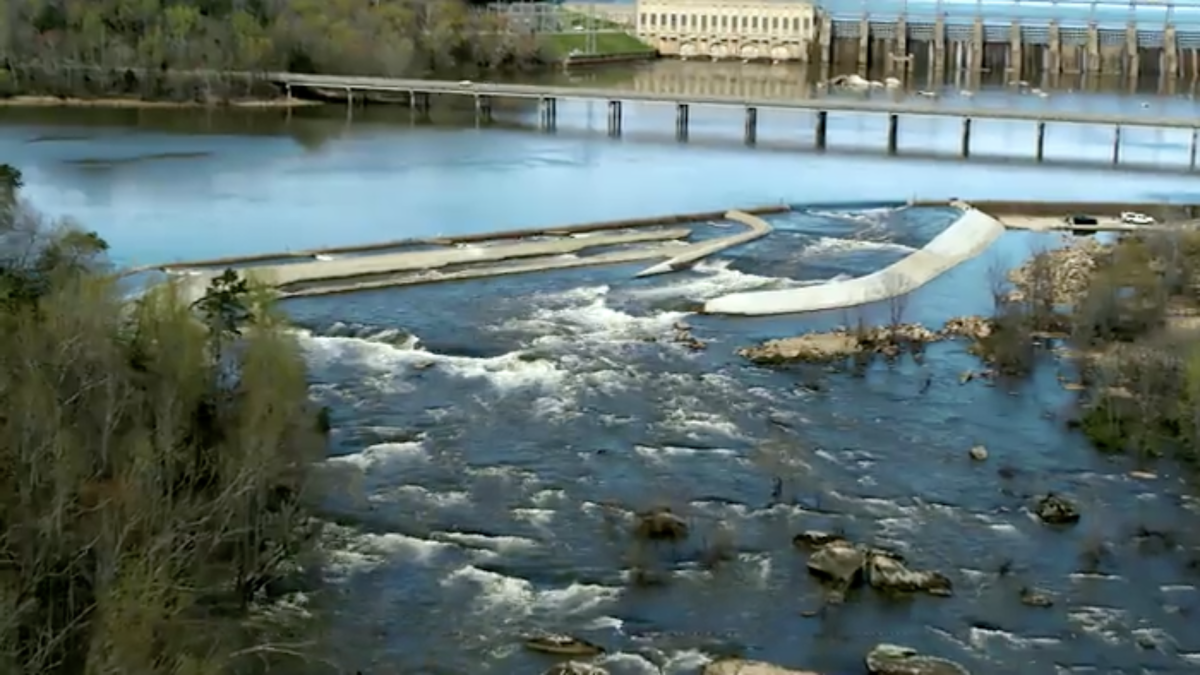Duke Energy Transforms Catawba River in Great Falls, SC
New whitewater runs give kayaking, fishing and tourism a boost
Tim Huffman stands in awe as water flows down a scenic stretch of the Catawba River.
“From rolling waves of granite to 40-foot rock bluffs, it’s not the sort of geology you’d expect to see in this part of South Carolina,” said Huffman, senior project manager at Duke Energy. “It’s like a transport to the mountains.”
Despite its natural beauty, the town of Great Falls, S.C., has been economically depressed since its textile mills closed in the 1980s. Tourism is expected to rise, however, as a result of new whitewater runs, a state park, hiking trails and other projects at Great Falls Reservoir.
“People are going to have a great deal of fun out here,” Huffman said. “They can fish, kayak, canoe, stand-up paddleboard, whitewater raft, you name it.”
One of two whitewater runs, the long bypass river channel, is open to the public during scheduled flow releases. It is a free community resource that will complement a diverse mix of other recreation in the coming years, said Christy Churchill, recreation project manager at Duke Energy.
“From a pedestrian bridge that will connect to a new state park at Dearborn Island, and all sorts of hiking trails, you don’t have to be a kayaker to enjoy it here,” Churchill said. “Maybe you like to fish, flat-water paddle, or just walk the trails and look at historic interpretation information.”
As part of its Catawba-Wateree license, issued by the Federal Energy Regulatory Commission, Duke Energy enhanced public recreation, as well as habitat for fish and other aquatic life, a collaborative process with stakeholders in communities where its hydro facilities are located.
As a result, the company can meet customers’ needs with sustainable, carbon-free electricity. The Catawba-Wateree Hydro Project, 12 hydro stations and 11 reservoirs in North Carolina and South Carolina, generates 799 megawatts of electricity, which, on average, is enough to power more than 639,000 homes. Hydropower also contributes to decarbonizing the Duke Energy grid.
To build the whitewater runs, the company returned water to a river channel that was diverted in 1907 to create the Great Falls and Dearborn Hydroelectric plants to produce power. Huffman’s team modified two dams, bringing a managed flow of water to the long and short bypasses.
“It’s a first-of-its-kind project for Duke Energy,” he said. “You’re looking at seven years of work from concept to final engineering and then another two years to construct it. So, it’s extremely complex.”
Duke Energy consulted S2O Design and Engineering, the same team that worked on the U.S. National Whitewater Center in Charlotte, N.C.
Kayakers, paddlers and others who wish to navigate the long bypass river channel, a 2.25-mile downstream channel with rapids the paddling community has classified as Class II and III rapids, during scheduled flow releases can do so through the Nitrolee Access Area.
Farther south on Great Falls Reservoir, pneumatically controlled steel gates were installed to provide aquatic flows, recreation flow releases and flood management. The .75-mile short bypass river channel will have a faster flow of water than the long bypass river channel, creating rapids for skilled paddlers.
It’s an exciting time for an area that hasn’t attracted many tourists, said Glinda Coleman, executive director of the Great Falls Home Town Association.
“I’ve heard nothing but positive comments from folks. People are excited,” Coleman said, “because we know it’s going to be a wonderful boost for economic development in Great Falls.”
A bar opened in town, she said, and people have begun to look at vacant properties along Main Street; others have expressed an interest in building campgrounds in the town that’s located about halfway between Charlotte and Columbia, S.C.
“Duke Energy went out of its way to help us connect the town of Great Falls, its downtown area to all of the projects,” Coleman said.
“And that’s what we strived for: ensuring our community benefits from all this development. So, we’ve appreciated the partnership tremendously.”
Just as important as making it fun, Huffman said, was including safety features. It’s why the river is channelized toward the west bank.
“If a trip doesn’t go as planned, a person would naturally go with the flow toward the bank where there are other people,” he said, “or to an area where they can self-rescue.”
Self-rescue features – exit steps, rescue rings and grab bars, for example – were installed throughout the long bypass structure. And Huffman noted other design safety elements, like energy dissipation pools.
“We’re required to put about 3,000 cubic feet of water each second into the river as part of the official recreation release,” Huffman said. “That’s a lot of water. It would be like 3,000 basketballs coming at you at once.”
During recreation flow releases, the boater bypass channel will be carrying a smaller portion of that, about 400 cubic feet a second.
A healthy aquatic habitat for fish and other wildlife was created. Rock surfaces, placed by hand to blend in with the environment, also aerate the water.
“If you’re a fish, and you get a chance to swim in freshly aerated water, you’re going to do it,” Huffman said. “Those rocks will greatly enhance the habitat of the area for fish while creating a natural setting.”
And the catfish here are “just monsters. They’re huge,” he added with a laugh.
Of bringing the project to life, Huffman called it the pinnacle of his career. Even better, he said, might be the community’s response.
“It’s just amazing to see people going down these channels,” he said. “I believe it’s a great community resource that does nothing but forecast a bright future for this town.”
More improvements coming
In the coming years, Churchill said Duke Energy has also committed to:
- Build the Lower Great Falls Canoe/Kayak Launch, another access area with parking (near the pedestrian bridge to Dearborn Island State Park), an ideal spot to access flat water in the lower part of the reservoir.
- Build a canoe/kayak launch with restrooms and parking on Cedar Creek Reservoir.
- Build a fishing platform just below Fishing Creek Dam.
- Upgrade the Fishing Creek Access Area (on Fishing Creek Reservoir) to add restrooms and a swimming beach.
- Provide funding to the S.C. Department of Parks, Recreation and Tourism to develop a state park on Dearborn Island.
More information about flow releases at Great Falls and other Duke Energy facilities: Recreation flow schedule
View original content here

